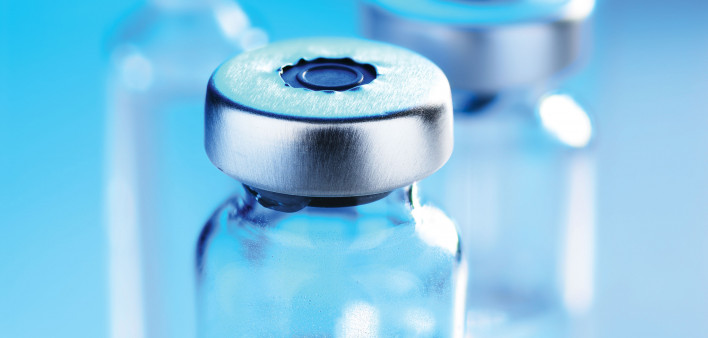In a two-year follow-up report, investigators behind a crucial mid-stage trial have indicated that the two most promising HIV vaccine regimens they assessed have prompted robust, long-lasting immune responses in human volunteers. This finding buttresses hopes that a pair of late-stage trials of versions of those vaccine candidates will be the first ever to substantially reduce the risk of HIV.
Anthony S. Fauci, MD, director of the National Institute of Allergy and Infectious Diseases (NIAID), which funded APPROACH, has said that if a vaccine reduces HIV risk by at least 50%, this would justify a widespread rollout.
Frank Tomaka, MD, of Janssen Pharmaceuticals, presented findings from the randomized, double-blind, placebo-controlled Phase I/IIa APPROACH study at the 10th International AIDS Society Conference on HIV Science in Mexico City. The 144-week follow-up analysis focused on 65 participants who were 18 to 49 years old and were vaccinated with either of the two regimens—of seven investigated—that were found to be the most promising. These study members lived in Thailand, Rwanda, Uganda, South Africa and the United States.
Initial promising findings from APPROACH were published in 2018 and, before that, were presented at the 9th International AIDS Society Conference on HIV Science in Paris.
Versions of those two promising vaccine regimens assessed in APPROACH have been advanced into Phase III trials. The Imbokodo trial of women in sub-Saharan African nations launched in 2017 while the just-announced Mosaico trial of men who have sex with men and transgender individuals will begin later in 2019 in various nations in the Americas and in Europe.
APPROACH included 400 HIV-negative participants who received four vaccinations over a 48-week period. The first two doses included what is known as a prime vaccine; the latter two shots were boosters.
All seven regimens investigated included a vaccine called Ad26.Mos.HIV. The investigators created this vaccine from adenovirus 26 (Ad26), an engineered strain of the common-cold virus that does not cause illness. They used this virus as a vector to transport a so-called mosaic of viral proteins, or antigens, which were constructed from the genes of various HIV types, in order to promote an immune response that would protect people against multiple strains of the virus.
The booster shots were based on various components of the prime vaccination or a different mosaic component using another vector, MVA-Mosaic. In addition to or in place of one of these types of boosters, some participants received a pair of doses of gp140, a key protein from the envelope, or outer shell, of HIV. (The virus was from HIV subtype clade C, which is common in southern Africa.) This protein was given with an aluminum phosphate adjuvant, which boosts immune responses to vaccines.
The analysis presented in Mexico City concerned the participants who received either of the two vaccine regimens that advanced to further trials. They all received Ad26.Mos.HIV at the study’s outset and at week 12. At weeks 24 and 28, they received Ad26.Mos.HIV plus gp140 with either a high dose (32 participants) or low dose (33 participants) of the adjuvant.
These 65 participants were ultimately told they had indeed received the vaccine and not the placebo—meaning the study was unblinded—and were evaluated at weeks 78, 96, 120 and 144. (By the 144-week mark, the participants had been followed for some two years after their last vaccination shot.)
None of the participants experienced serious adverse health events during follow-up.
Both groups maintained strong immune responses to the vaccine components—in the same range at the 120- and 144-week points as had been seen at the 78- and 96-week evaluations. The durability of the antibody response to clade C of HIV was consistent regardless of the region of the world in which participants lived.
A stronger immune response to the first vaccination predicted a higher response at all subsequent times during follow-up.
The study authors compared the level of HIV antibodies in the participants with those seen in nonhuman primates that in a previous study had been given a version of the vaccine regimen. They found that the antibody levels seen in the humans actually exceeded those in the primates 72 weeks into the animal study, at which point the primates were protected against SHIV, a simian version of HIV engineered for research purposes. Mathematical modeling predicts that this immune response in humans will remain higher than that thresholdidentified in the primate study through five years of follow-up.
The investigators plan to continue to follow the participants in APPROACH and will report further findings until approximately five years have passed since the last vaccination—meaning the last report will likely come in 2022. Meanwhile, Imbokodo is expected to produce results by about 2021, and Mosaico will likely wrap up in 2023.
To read the study abstract, click here.







1 Comment
1 Comment